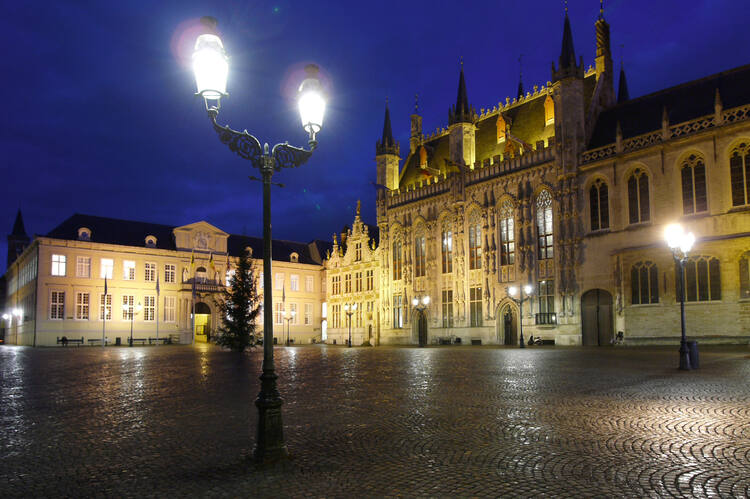The Historic Centre of Brugge is associate degree outstanding example of an field ensemble, illustrating significant stages in the business and cultural fields in medieval Europe.
Brugge in medieval times was known as an ad metropolis within the heart of Europe.
The city reflects a substantial exchange of influences on the event of art and design, particularly in brick Gothic, which isindividualistic of northern Europe and thus the Baltic. This architecture powerfully determines the character of the historic centre of the town.
The 1th century town walls marked the boundaries of the medieval city. Although the walls themselves square measure lost these days, they remain clearly visible, emphasized by the four extant gates, the ramparts and one of the defence water towers. The medieval street pattern, with main roads leading towards the importantcommunal squares, has mostly been protected, as well because the network of canals which, once used for mercantile traffic, played associate degree necessary role within the development of town.
 In the 15th century, Brugge was the cradle of the Flemish Primitives and a midpoint of patronage and painting development for artists such as Jan old master and Hans Memling. Many of their works were exported and influenced painting designs all over Europe. Exceptionally important selection have remained in the town till now.
In the 15th century, Brugge was the cradle of the Flemish Primitives and a midpoint of patronage and painting development for artists such as Jan old master and Hans Memling. Many of their works were exported and influenced painting designs all over Europe. Exceptionally important selection have remained in the town till now.Even after its economic and inventive peak at the finish of the center Ages, building and urban development continued, although Brugge largely incomprehensible the ninenteenth-century industrial revolution. In the 18th and nineteenth centuries, many medieval parcels were joined to larger entities and new quarters were additionally developed. The most striking samples of giant scale post-medieval interventions within the historic centre square measure the urbanization around Coupure (1751-1755), the Zand and the first train station (1838),the Koningin Elisabethlaan, the Theatre quarter (1867), and Gulden Vlieslaan (1897) and the creation of the Guido Gezelle-neighbourhood (1920-1930).

No comments:
Post a Comment